With this blog post, we would like to introduce and launch our new cooperation with FYORD! FYORD is a joint network by CAU and GEOMAR initiated to connect and support Early Career Researchers of the marine sciences from Master’s to PostDoc level. After occasional exchanges in the past (see our blog here), we are very happy to establish a closer, long-term cooperation with FYORD.
One example of the support provided by FYORD is the Travel Grant. Any FYORD member can apply for funding to travel to conferences, workshops, and summer schools, or visit project partners or institutes. After returning from a funded trip, the FYORD members provide a short report about the event they participated in, to inspire and motivate others and share their experiences. As part of the newly established cooperation, OceanVoices will publish these reports on behalf of FYORD. Below you can find the first two reports, where Helene, Sayoni, and Xiaoqi share their experiences at the largest European geoscientific conference. Enjoy!
My experience of participating in the EGU assembly for the first time
I am Xiaoqi Xu, an exchange PhD student in GEOMAR, from the Institute of Atmospheric Physics, Chinese Academy of Sciences. My major is meteorology, and my research is about the atmosphere-ocean-sea ice interaction over the Southern Ocean as well as the development of an ocean-sea ice coupled model.
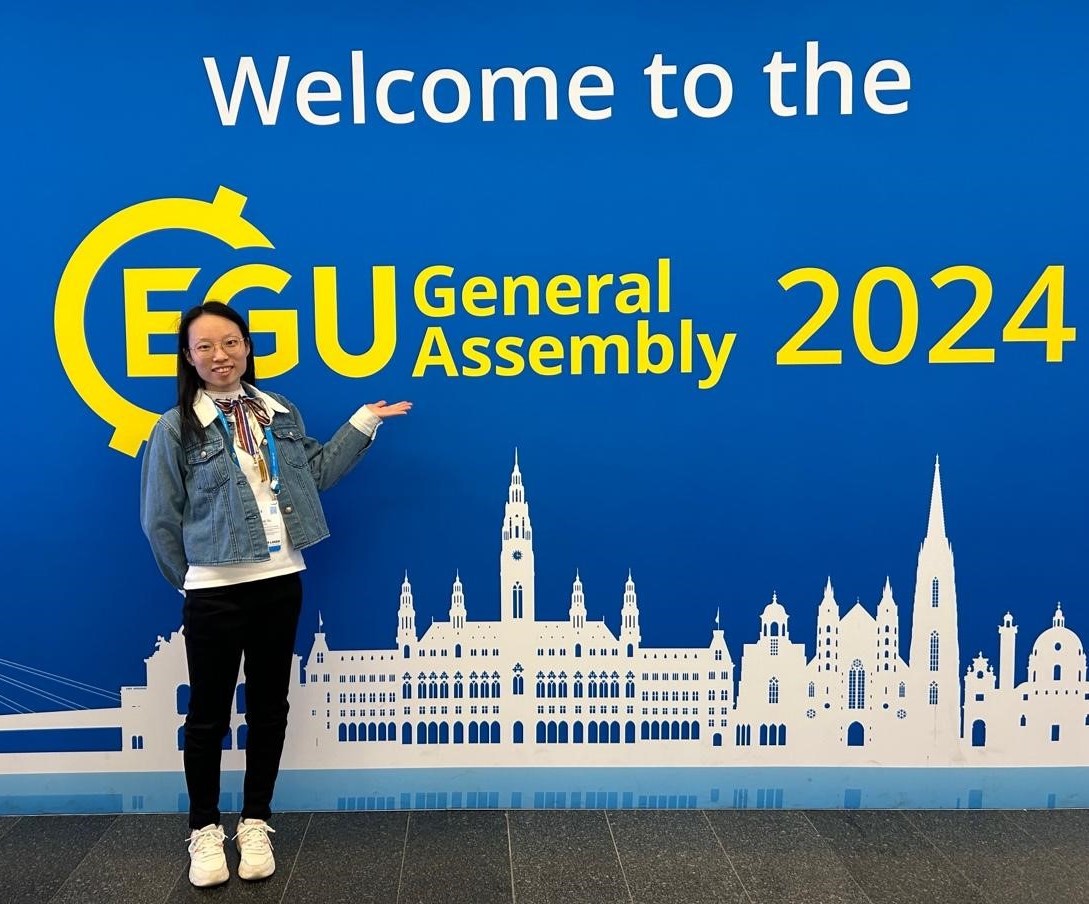
Since starting my PhD studies, I have believed that academic communication is a crucial part of scientific research. With the scholarship supported by the University of Chinese Academy of Sciences, I had an opportunity to go to GEOMAR for a one-year exchange program. Under the guidance of Torge Martin, a scientist in the Ocean Dynamics group in GEOMAR, I am studying the mechanism of the atmospheric response to freshwater input around Antarctica based on FOCI (the fully coupled climate model developed by GEOMAR).
I am delighted to have received funding from FYORD and was pleasantly surprised that guest students like me are eligible for the same benefits. I applied for funding to participate in the General Assembly of the European Geosciences Union (EGU). EGU General Assembly is a fantastic event in the geoscience community, held annually in Vienna. This year, the conference featured 18,896 presentations, with early-career scientists accounting for 57%, making it an excellent platform for young researchers. Six months before the conference, I decided to organize my research with Torge and present it at this international event to promote our work. Since we didn’t have project funding related to this topic at the time, I learned about FYORD and applied for funding with the help and advice of colleagues, receiving a positive response quickly, which was a pleasant surprise.
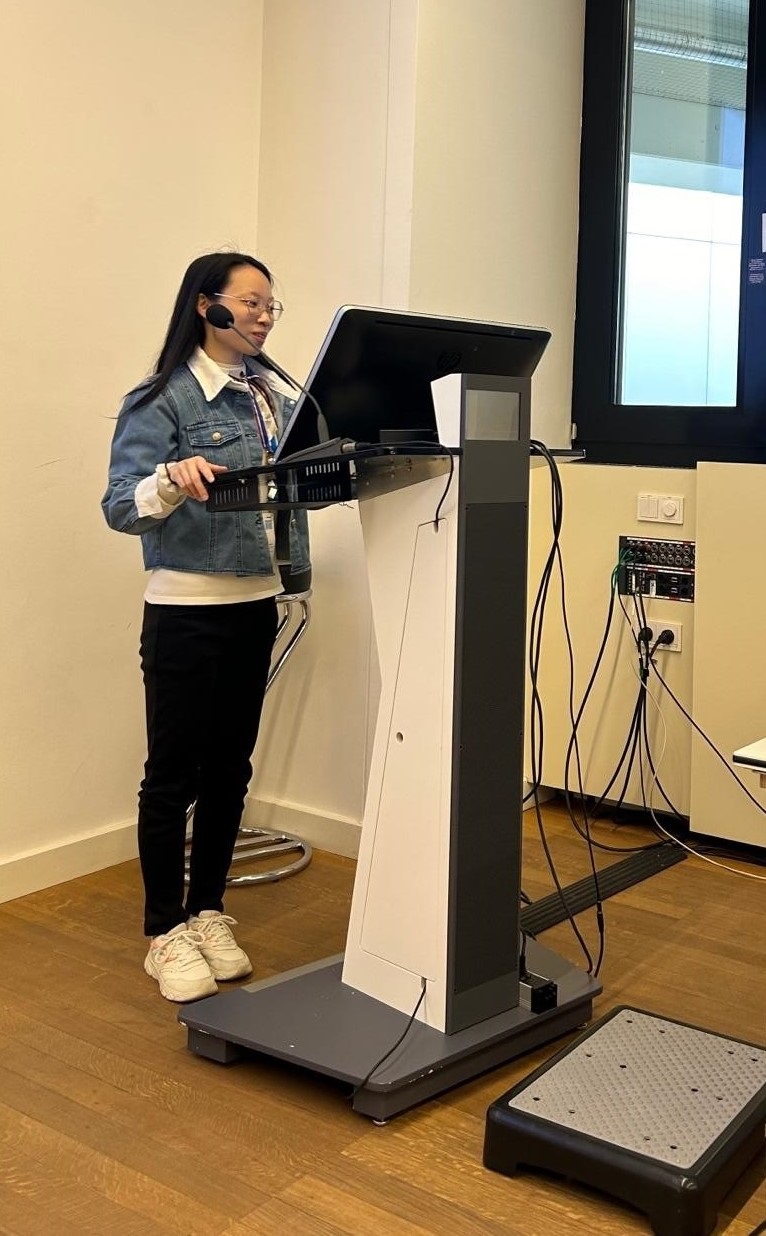
Xiaoqi Xu giving her talk 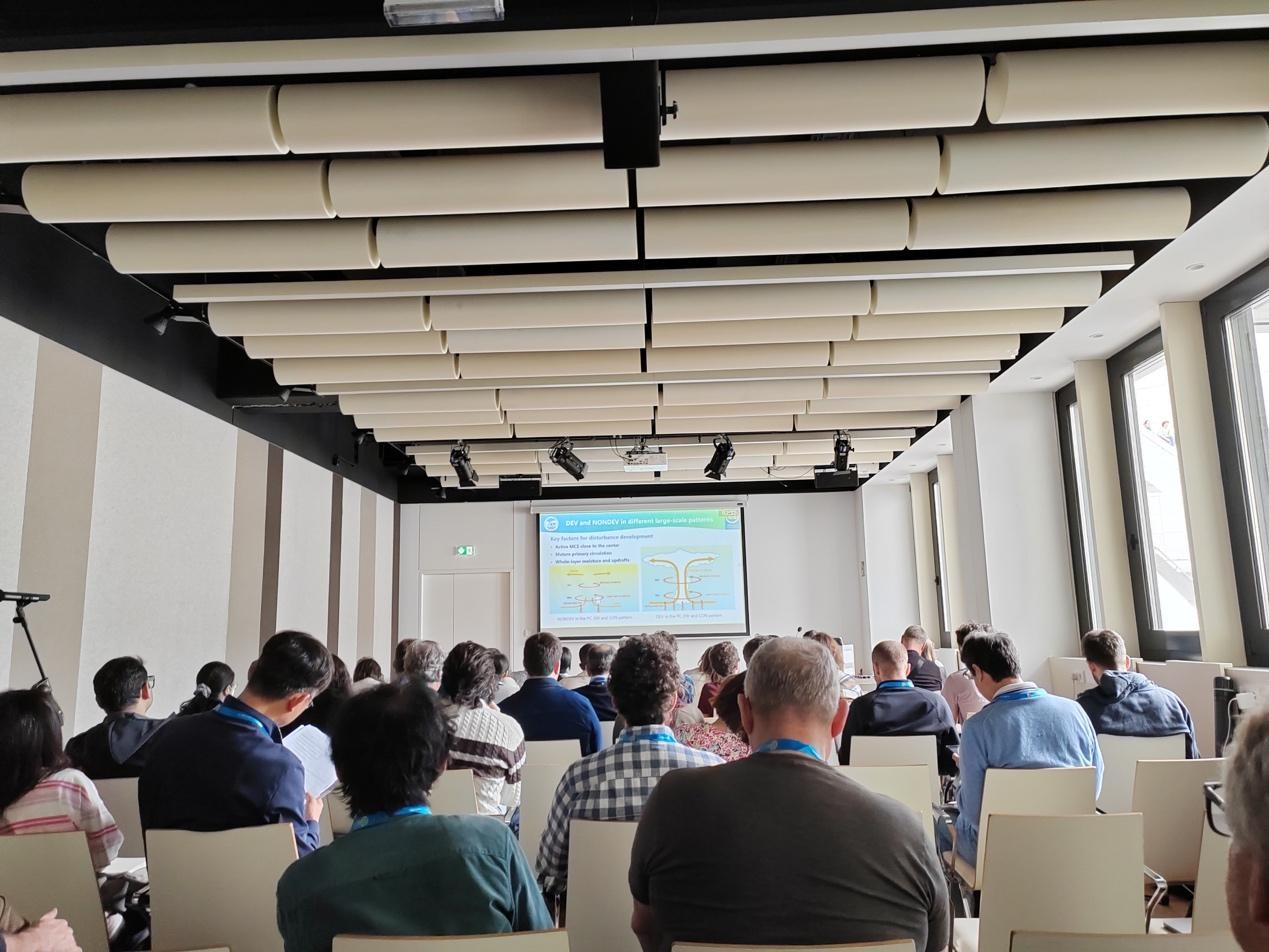
A crowded meeting room 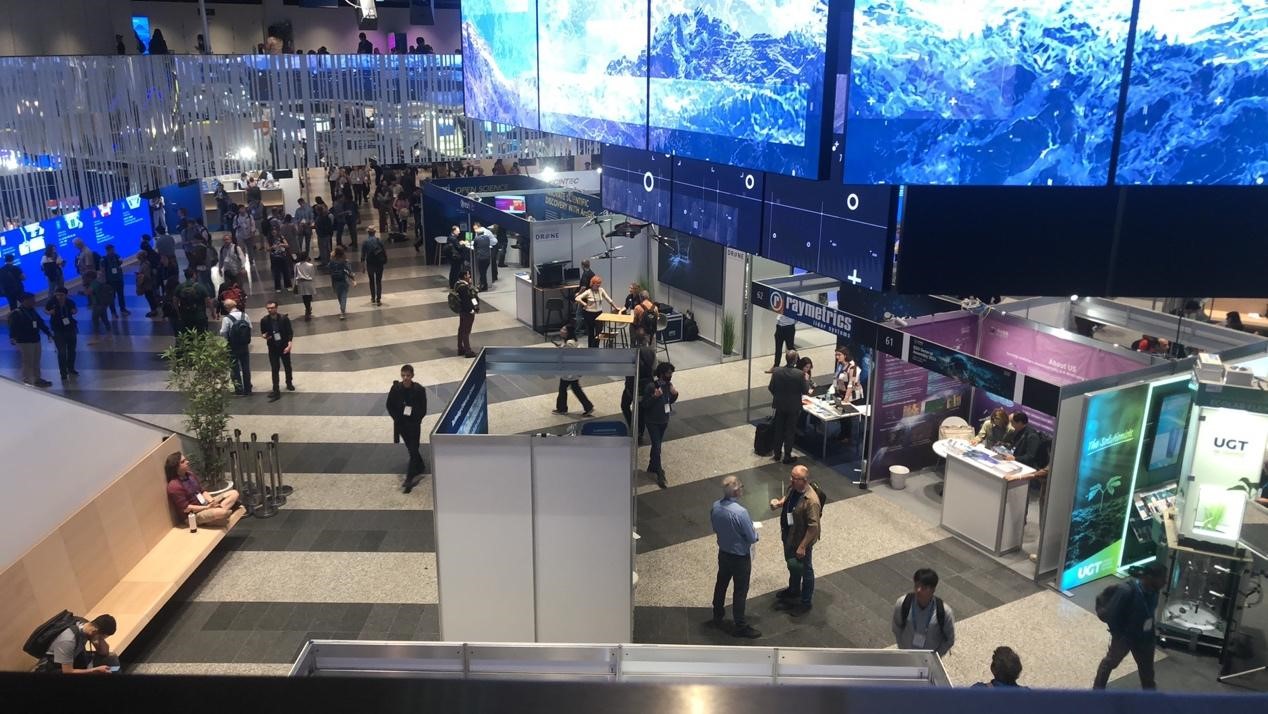
The exhibition hall
A month before the conference, I spent a lot of time and effort perfecting my presentation. The EGU venue is vast, with a lot of sessions and a tight schedule, so to attend the talks of interest, it’s essential to plan and bookmark them in advance. I gave an 8-minute oral presentation (plus 2 minutes for discussion), requiring careful management of my content due to the time constraints. Oral presentations provide an opportunity to systematically convey my research and enhance my presentation skills. For researchers, it’s crucial not only to conduct research but also to articulate it logically.
In addition to oral presentations, the poster sessions were a pleasant surprise for me because they allowed for more extended discussions (1-2 hours) with other scientists in similar fields. If given the chance, I would consider presenting a poster in the future.
During the conference, my days were filled with attending talks and visiting the poster sessions, where I could chat over coffee. This intense exchange of ideas, both giving and receiving, is a highlight. Although we cannot remember every detail of each talk, the main goal of such conferences is to know about what scientists worldwide are working on and what improvements are needed. Additionally, it’s a large social platform where you can meet your old friends, make new ones, and learn about various institutions, which can help in future career decisions.
The overall experience of the conference was very positive, and the venue was modern and well-organized. I highly recommend attending EGU. Of course, one small gripe is that lunchtime can be extremely crowded, with lines for food stalls exceeding 40 minutes, so bringing your own lunch might be a good idea to avoid missing out on sessions.
Xiaoqi Xu
Sayoni’s experience at EGU 2024
Hello, I am Sayoni Bhattacharya and I am currently working as a Ph.D. student in GEOMAR, Kiel. My topic of research is to develop an autonomous sensor for measuring Dissolved Inorganic Carbon (DIC) in seawater.
I applied for a travel grant from FYORD to attend the EGU 2024 conference. The conference was held in Vienna, Austria from 14-19th April 2024. EGU is considered one of the biggest conferences in Europe in the field of Earth Science. According to this year’s survey, almost 20,000 people attended from all over the world. EGU is a successful concoction of ocean, land, and space science, where curious scientists can develop a network with peers from similar expertise, or they can expose themselves to other genres of science to get a new flavour. There were parallel sessions of talks and posters for consecutive days. With the help of the EGU24 app, a curious person can navigate through all the sessions and choose to attend specific sessions. Moreover, several companies, and publishing houses e.g., Pyroscience, ThermoScientific, and Elsevier showcased their products in company booths. I was particularly interested in sensors which were commercially available to measure gases or liquids using different working principles.
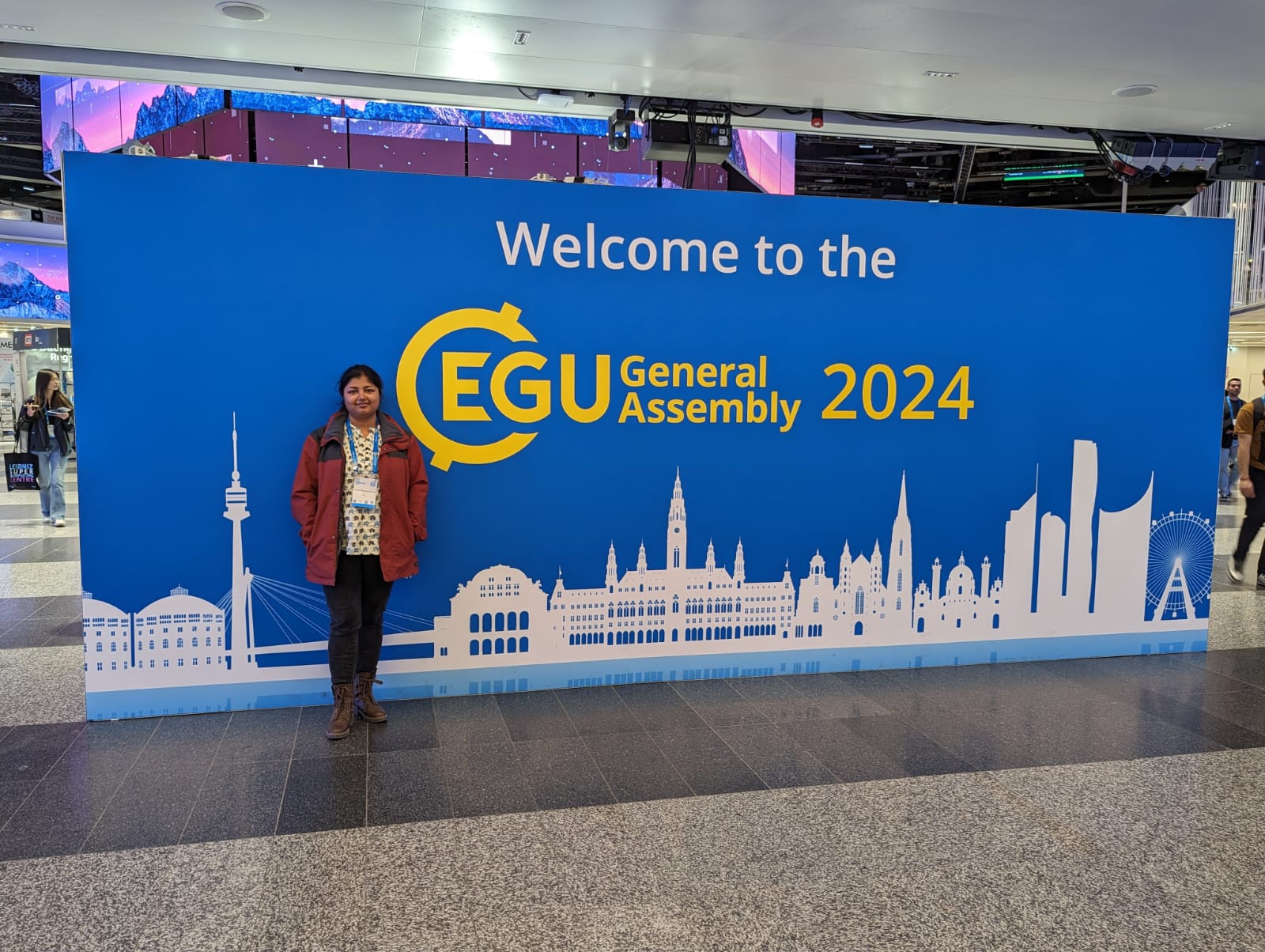
Sayoni at EGU 2024 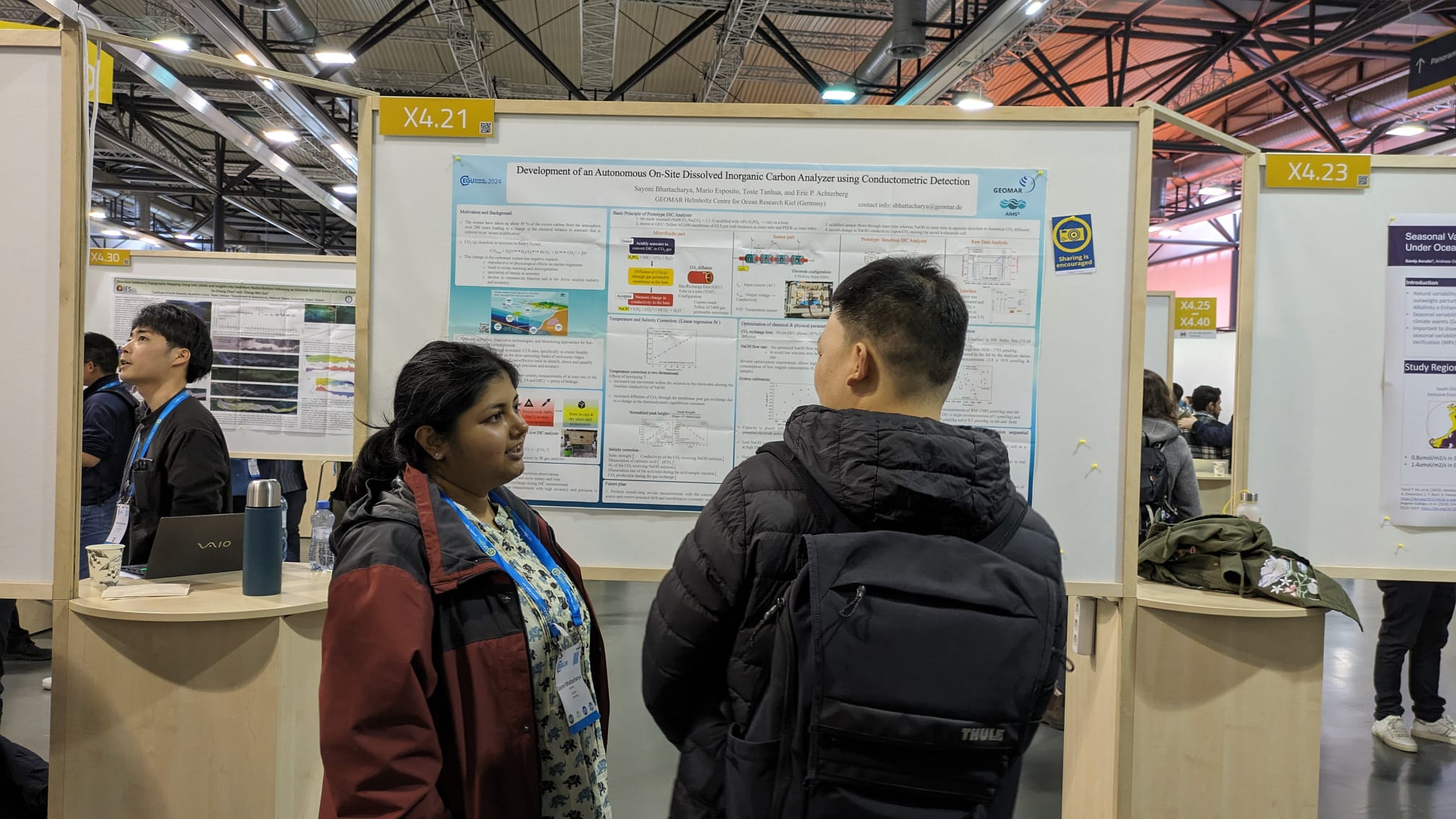
Discussion research during the poster session
In EGU 2024, I applied for a short talk but in the end, my abstract was selected for a poster presentation and I presented my Ph.D.-related work. I communicated with many scientists, from early career scientists like myself to well-known professors. In each interaction, I felt that I explored a new way of thinking about my own work and I can translate that idea to my next discussion. I felt that the poster sessions were more active and dynamic than talks.
My overall feeling about EGU 2024 is bittersweet. I like the idea of connecting scientists of different backgrounds from any corner of the world and making it a successful event without any visible problems. On the other hand, it felt robotic, as from getting the ID badge to hovering around a session is all done without any human interaction. Finally, from my very personal feeling, I would like to say that the cost to attend EGU is very expensive and no food was served (except for drinks at a few specific times).
Sayoni Bhattacharya
A short report on visiting Europe’s largest geoscience conference
My name is Helene-Sophie Hilbert and I am a doctoral researcher at GEOMAR Helmholtz Centre for Ocean Research Kiel. My research belongs to the field of marine geophysics, a discipline which studies the physical processes and the physical properties of the Earth within the marine environment. My main work focuses on the back-arc basin and active volcanic island arc in the Mariana Subduction zone in the north-western Pacific. I am fascinated by these geologic settings because they are regarded as highly dynamic regions encompassing oceanic and continental domains. While island arcs are considered prime locations for the growth of continental crust, back-arc basins play a major role in the opening and closure of ocean gateways. To gain information about the structures in the crust and upper mantle in the Marianas, I use ocean bottom seismometers that record seismic signals on the seafloor and analyse these signals by generating a seismic tomography (a bit more abstract version of computer tomography, you may know from your doctor).
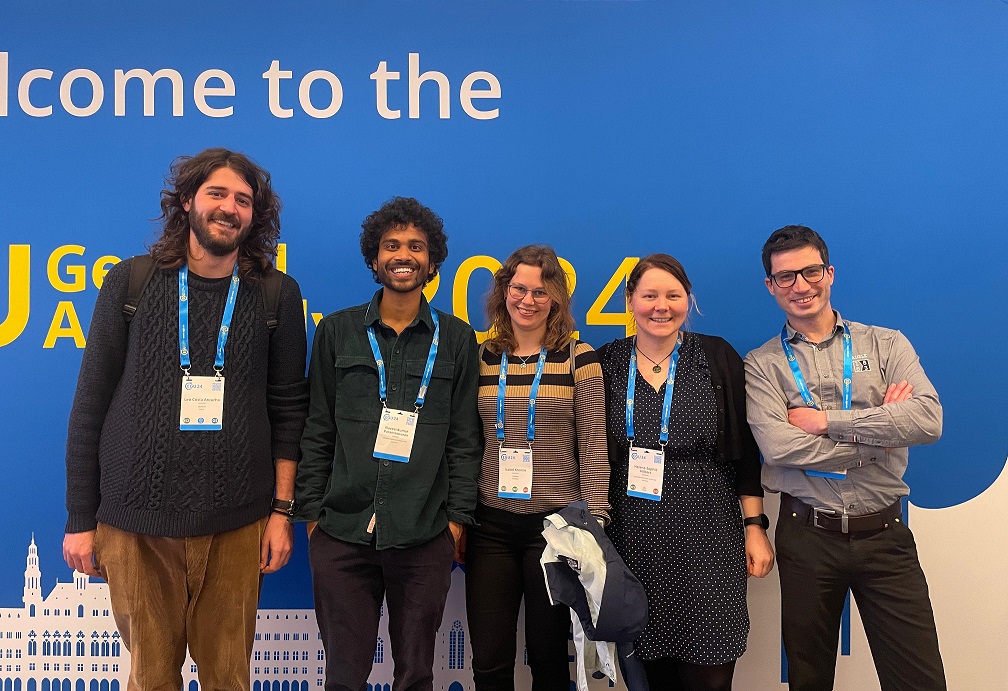
Some FYORD travel grand recipients 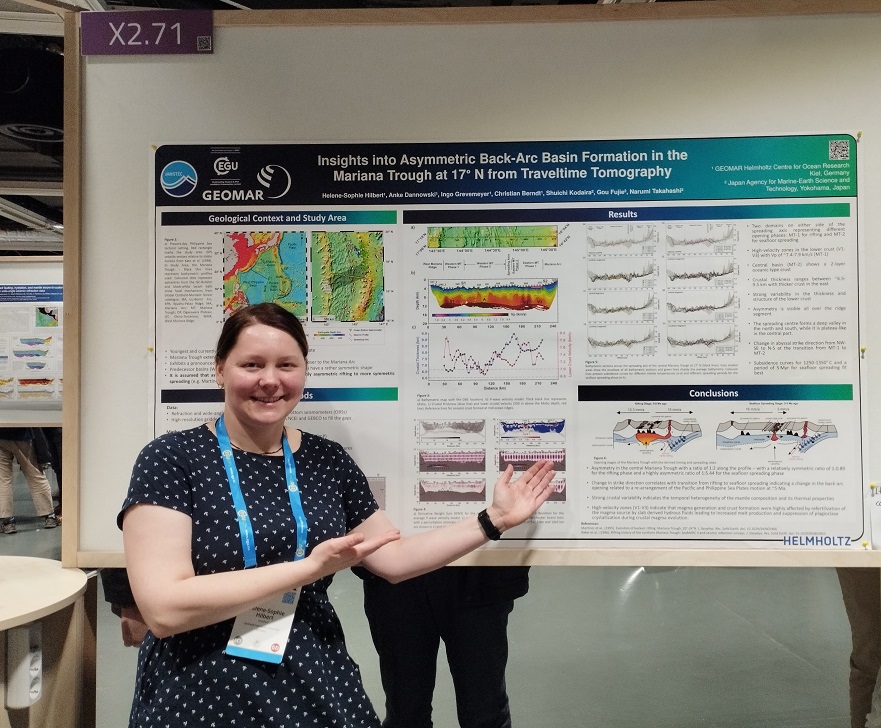
Helene presenting her Poster
From 14-19 April 2024, I now had the opportunity to present my research about the youngest back-arc basin, the Mariana Trough, at the European Geoscience Union (EGU) General Assembly in Vienna. The EGU General Assembly is Europe’s largest and most prominent geoscience event with more than 20,000 participants this year from all over the world. I presented my research results in the form of a scientific poster in a session focusing on the geological processes inside subduction zones during their initiation and later evolution. This presentation format gave me the chance to have in-depth discussions with other experts on the individual aspects of my interpretation. Due to the nearly 19,000 presentations during the EGU General Assembly, it was possible to get a wide overview of the current hot topics in the geoscience community and to meet scientists from all kinds of disciplines and institutes. Although the programme was very tightly scheduled, there was still plenty of time for networking. For me personally, it was quite extraordinary and sometimes overwhelming due to the sheer flood of information. But I would still recommend to every geoscientist to have this experience and benefit from the direct exchange with the community. I am therefore grateful that I was given this opportunity thanks to the support in the form of the FYORD Travel Grant.
Helene
